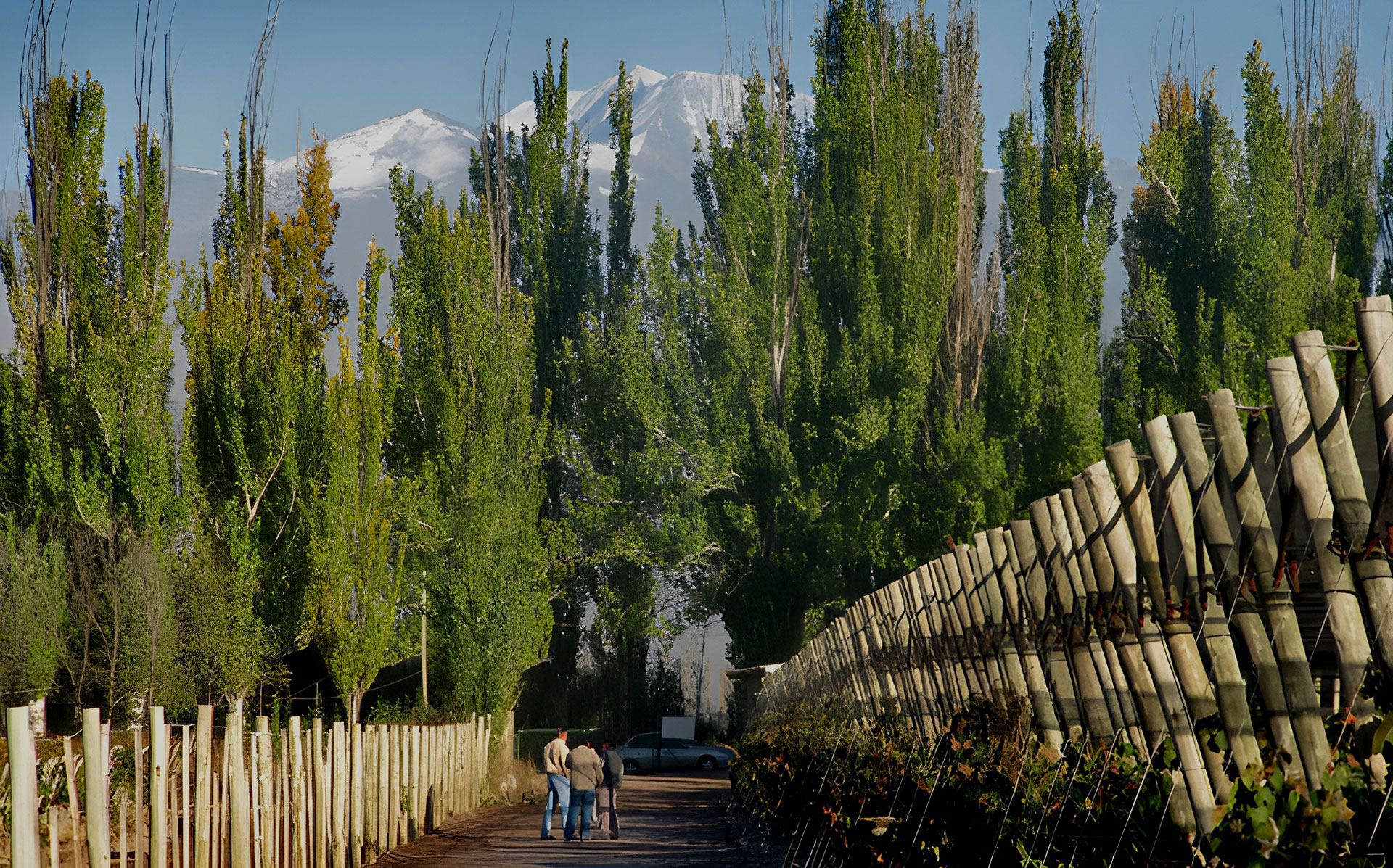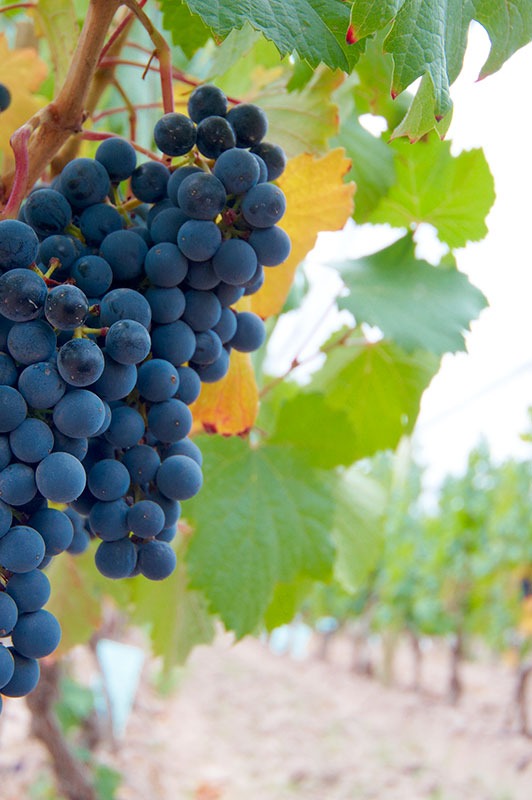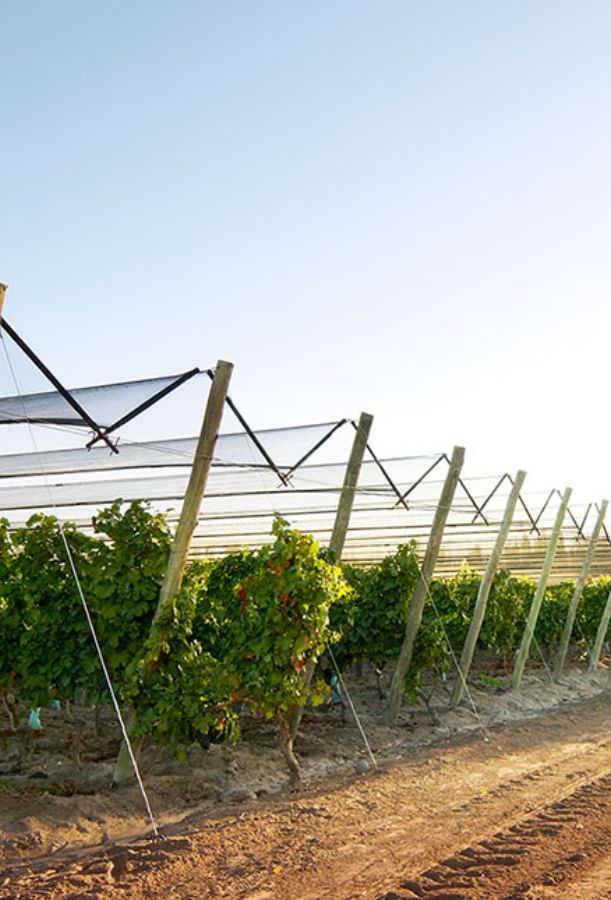
Tending the land
Vineyard-keeping is a full-time job.
All viticulture is done with organic practices, and our vineyard received certification in 2015.
Even though the Versado vineyard is less than three hectares (about seven acres), we have an Encargado living on the property to ensure perfect care. Carlos Gómez joined us in 2019 and, along with his wife Carolina, live on-site. As a full-time “vineyard keeper,” Carlos manually performs the critical daily work in the vineyard. Carlos’ close companion is Bob, our working horse. Together they perform the soil and irrigation work. During short seasonal periods when the family alone cannot keep up, Carlos oversees a small team of experienced Mendoza vineyard workers.
Under the expert viticultural direction of Vineyard Manager, Sergio Rinaldi, the estate is meticulously tended to ensure only the highest quality grapes for classically styled winemaking.
Each of our vines is 100% European. Like the legendary ‘pre-phylloxera vines’ planted in mid-1800s Europe, all of Versado’s vines are grown “ungrafted.” Entirely on their own roots, not grafted to the phylloxera-resistant rootstocks of native North American grapes, our ancient Malbec vines potentially provide the purest expression of the classic grape variety. Slightly extended growing seasons and naturally reduced quantities of grapes (both enhancing potential flavours) are the other benefits of ungrafted vines. Ancient, ungrafted, noble vinifera varieties are incredibly rare, even in the upper echelons of fine winemaking.
OUR VINEYARD

Rebirth
The U-shaped portion that is buried will form roots – miraculously more quickly than a new vine would because of the tremendous energy from the fully established old “mother vine.” Multiplying the effect, a thin steel “girdle” on the buried shoot prevents the flow of any nutrient back to the mother vine, while flow in the other direction is completely unrestricted. The result is a replacement vine that very quickly matures to the qualitative equal of the rest of the ancient vineyard, displaying consistent flavour profiles and, like the mother, 100% ungrafted vinifera. The quick establishment of this vine is especially important in a great, high quality/extremely low vigour vineyard, where a young nursery vine might take as many as eight to ten years to reach its full production, with the grapes still not being of comparable quality.
A different kind of safety net.
One quality factor in our vineyard, however, relates not to age, climatic or geographic reasons, but to our own recent intervention. Prior to purchasing the vineyard, we realized that the same cool air flow that gives the vineyard its greatness, also, unfortunately, brings far too frequent hail to the area. (Achaval-Ferrer’s famed Bella Vista Vineyard – the vineyard immediately to our north, between us and the Rio Mendoza, and virtually the highest rated wine in Argentina over the last decade – had no 2005 or 2006 wines due to devastating hail damage!)
To solve this issue at Versado, we went to the extreme expense of covering our entire vineyard with overhead netting; we did it on tall wooden posts, three metres up, so as not to interfere with our all-important air flow. As a direct benefit, not only does the netting stop hail stones, it intercepts approximately 3% of the sun’s ultraviolet rays, so our wines’ pH is tweaked favourably by another fraction, complementing the already-excellent moderation of our cool air corridor. (And some protection from marauding birds, and the damaged, infected berries that often result from their pecking, is a further advantage provided by the netting.)

Voice from the Vineyard
Sign up to receive periodic insider emails from Ann & Peter.

